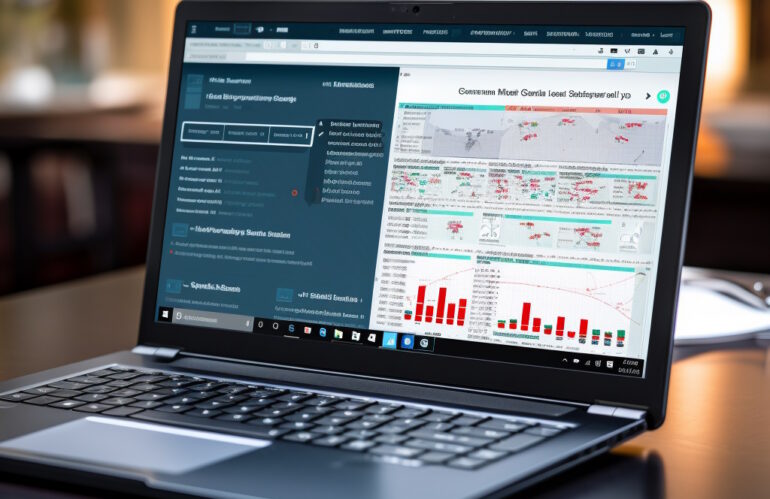In the vast digital landscape, the business model of Potentially Unwanted Programs (PUPs), particularly search redirects and toolbars, has evolved into a sophisticated ecosystem. One of the main revenue streams for these software is the display of targeted advertisements.
The Mechanics of Targeted Advertisements in PUPs
At its core, the targeted advertisement model relies on collecting user data to display relevant ads. When a user installs a PUP, often inadvertently bundled with legitimate software, the program begins monitoring the user’s online behavior. This can include tracking search queries, browsing history, and even personal preferences. The PUP then uses this data to display ads tailored to the user’s interests.
The Financial Incentives
The financial model behind targeted advertisements in PUPs is straightforward: the more clicks an ad receives, the more revenue it generates. According to a 2022 report by CyberTech Insights, PUP developers can earn between $0.10 to $0.50 per click, depending on the ad’s relevance and the user’s location. In regions with high purchasing power, such as North America and Western Europe, the cost-per-click (CPC) can be even higher.
Ad Networks and Middlemen
Ad networks and middlemen operate as the linchpin in the PUP advertising ecosystem, facilitating the intricate dance between PUP developers and advertisers. These entities are not just intermediaries; they are powerhouses that dictate the flow of digital advertising revenue, especially in the realm of potentially unwanted programs.
Ad networks aggregate vast amounts of advertising inventory from a plethora of sources, including PUPs. They then categorize this inventory based on various parameters, such as user demographics, online behavior, and the nature of the PUP. This categorization allows advertisers to target specific user segments, ensuring higher engagement and conversion rates.
The financial dynamics between PUP developers and ad networks are multifaceted. Typically, these networks operate on a revenue-sharing model. For every ad displayed or clicked within a PUP, the developer receives a pre-agreed percentage of the revenue. According to a 2022 study by AdTech Analytics, this share can range from 30% to 60%, depending on the ad network’s size, reach, and negotiation power.
While the digital advertising landscape is vast, it’s noteworthy that a few major players dominate the space. Data from CyberAd Insights 2023 indicates that just five ad networks account for approximately 68% of all ads displayed by PUPs. These behemoths offer PUP developers access to top-tier advertisers, advanced targeting algorithms, and, crucially, timely payouts.
However, the dominance of these major networks has given rise to niche ad networks specializing exclusively in PUPs and other gray-area applications. These specialized networks often offer PUP developers more favorable terms, higher revenue shares, and tools to optimize ad placements. Their rise underscores the lucrative nature of PUP advertising and the constant evolution of the digital ad ecosystem.
Yet, it’s not all smooth sailing. Ad networks associated with PUPs often find themselves under the scanner. Their aggressive advertising tactics, combined with the controversial nature of PUPs, have led to criticism from digital rights groups and regulators. In fact, several ad networks have faced sanctions or have been blacklisted by major browsers for violating user privacy norms or for non-transparent practices.
User Profiling and Data Aggregation
The effectiveness of targeted ads hinges on the accuracy of user profiles. PUPs employ sophisticated algorithms to analyze and categorize user data. Over time, these programs can create detailed user profiles, encompassing not just browsing habits but also socio-economic indicators, interests, and even potential future behaviors. Some PUPs have been found to aggregate data from multiple sources, enhancing the depth and accuracy of these profiles.
The Ethical and Privacy Implications
The aggressive data collection tactics of PUPs have raised significant privacy concerns. While users might consent to data collection by legitimate applications, PUPs often operate in the shadows, without clear disclosure. This lack of transparency violates various data protection regulations, such as the General Data Protection Regulation (GDPR) in Europe.
The Impact on System Performance
Beyond privacy concerns, PUPs displaying targeted ads can degrade system performance. These programs consume bandwidth, display intrusive pop-ups, and can even cause browser crashes. A study conducted in 2020 found that systems with PUPs installed had a 25% slower browser response time compared to clean systems.
Ad Fraud and Click Farms
The lucrative nature of targeted ads has given rise to ad fraud. Some unscrupulous PUP developers use click farms – a network of compromised computers – to artificially inflate the number of clicks on their ads. This fraudulent activity not only deceives advertisers but also skews market analytics, making it challenging for legitimate businesses to gauge online engagement accurately.
The Future of Targeted Ads in PUPs
With increasing awareness about digital privacy and the introduction of stricter regulations, the PUP landscape is undergoing a transformation. Major browsers like Chrome and Firefox have introduced features to block or warn users about PUPs. However, as with any cyber threat, PUP developers are continually evolving, finding new ways to bypass these defenses and deliver targeted ads.









